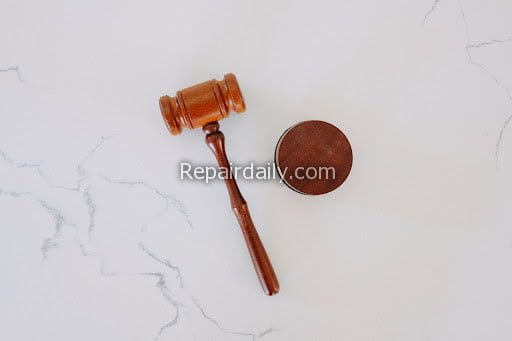Hundreds of thousands of Americans die each year as a result of motor vehicle accidents and preventable medical errors. These two situations, among many others, make up the majority of wrongful death claims in the United States.
However, many wrongful death cases are never pursued. This is mainly because the deceased’s relatives incorrectly believe that only deaths caused by intentional killing can be pursued in a civil action.
While the intent is one of the three main elements in proving a wrongful death claim, deaths caused by recklessness or negligence qualify for compensation as well.
In this article, we’ll explain, in detail, everything that goes into successfully proving a wrongful death claim.

What do you need to prove in a wrongful death claim?
For a successful wrongful death claim, there are three main elements that you need to prove:
- Negligence
- Intent
- Damages
Pieces of evidence, such as the deceased’s medical bills, proof of funeral and burial costs, witness testimonies, and employment documentation, will be essential in proving these elements.
Let’s explore exactly what goes into proving each one of these elements individually.
1. The liable party was negligent
The first thing you’ll need to prove in a wrongful death claim is the negligence of the liable party.
Negligence is seen as a person’s failure to act appropriately toward others. As a result of such behavior, others end up being exposed to unreasonable risk.
In other words, every person must take reasonable steps within their means to ensure the well-being of others. Failing to do so results in what’s known as a “breach of duty of care.”
For example, drivers are obligated to drive vehicles safely. That means that they must obey traffic laws, consider road and weather conditions, and remain alert while driving.
If a driver operates a vehicle while under the influence of alcohol or drugs, and such driving results in an accident where another party is injured, the driver’s behavior would be considered negligent.
In addition, causation between the liable party’s inappropriate behavior and the injuries that caused the wrongful death also needs to be proven. Without causation, there is no legal responsibility.
Finally, a wrongful death claim requires death and other losses to occur as consequences of the accident. Other losses could include funeral expenses, lost wages and medical bills, for example.
PRO TIP: A common defense in wrongful death claims is based on the legal principle of comparative negligence. That means that you, as a plaintiff, should expect the liable party to claim that the victim’s negligence contributed to the wrongful death.
2. The negligent party’s conduct was intentional
If there’s one thing you need to know about legal provisions, it’s that every word in them is intentional and carries importance.
In the example above, it makes a huge difference whether the driver decided to drive under the influence consciously or not.
Namely, the law requires that the negligent party be negligent intentionally. This requirement can often be interpreted differently.
For instance, it could include situations where the driver knew that they wanted to hurt another person before drinking and driving, and drinking was a way to help them make that decision more easily.
Or, more commonly, the driver had never had ill thoughts toward anyone when deciding to drive under the influence. However, they were aware that drunk driving could endanger the lives of others, and they decided to get behind the wheel anyway.
So, whether the liable party intends to cause fatal harm or believes that harm may occur as a result of their actions, having a mental objective behind a negligent act means that there was an intent.
Keep in mind that wrongful death claims are brought in civil actions. However, this doesn’t mean that you can’t criminally prosecute the party liable for wrongful death.
In fact, both are options. However, proving someone’s liability is easier in a civil action.
3. Proving that your loss resulted in damages
If you are the victim’s spouse, child, or parent, you’re likely entitled to civil damages. This is the money awarded to you by the court for the losses that you’ve suffered in a wrongful death case.
These damages can include:
- Funeral and burial costs, including the costs of a burial plot, casket, tombstone, obituary, fees regarding the preparation and transportation of the body, etc.
- Lost future income — based on the deceased’s income before death and several other circumstances, their representative may be entitled to the equivalent monetary compensation for the years to come
- Non-economic damages, such as the loss of companionship
- Compensation for medical bills and related expenses
- Compensation for pain, suffering, grief, and emotional anguish
- Punitive damages — In certain cases, these damages are awarded to punish the liable party for their negligent behavior and are often not as high
In any case, many, if not all, of these damages are difficult to quantify.
Negotiating a fair settlement will require the assistance of an experienced attorney. When choosing an attorney to help you through the process, look for a team that specializes in personal injury cases, including wrongful death.
For example, for S&B attorneys, NYC wrongful death cases are included in their area of expertise. The team at Spar & Bernstein has been handling these types of cases for over 50 years, and they will support you in your claim every step of the way.
Additional elements to prove in a wrongful death claim
Besides the three main elements we covered, depending on the circumstances of your case, you may need to prove additional elements.
For example, in cases where a wrongful death is a result of medical malpractice, you won’t just need to prove a breach of duty of care. You’ll also need to prove a breach of professional standards of care.
This means proving that the medical expert did not exercise the kind of care that is expected in the medical profession.
As you might guess, proving this is extremely challenging. That’s why, in situations like this, you want to hire an attorney who deals specifically with wrongful death cases resulting from medical malpractice.
Apart from that, if you decide to seek punitive damages, you may also need to prove that they’re appropriate.
These damages are rarely awarded and limited in size, as they require you to prove that the liable party intentionally inflicted a highly unreasonable risk of harm upon others, while consciously disregarding fatal consequences.
Wrongful death – civil action vs. criminal prosecution
As previously established, the deceased’s relatives may seek damages or retribution for their loved one’s death before two different courts: civil and criminal.
The major difference in pursuing actions before either of these courts is the burden of proof.
In a civil action, you will need to convince the judge that your claims are more likely true than not. In other words, there’s at least a 51% chance that your claims are valid.
In a criminal action, you need to prove your claims beyond a reasonable doubt. That means that you must have absolute conviction that your claims are true and that the evidence you’ve provided leaves no room for doubt.
As you can see, the standard of proof is much lower in civil actions, so most people opt to seek damages through personal injury claims first.
As mentioned, the best way to handle a wrongful death claim is to find a team of experienced attorneys who specialize in this area of law, and will support you throughout the process.





